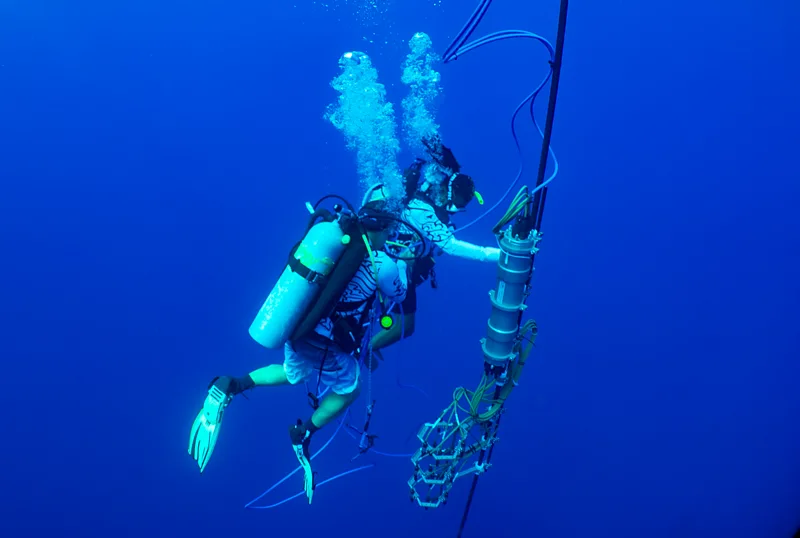Whale Talk: How Scientists are Deciphering the Language of the Seas
In a landmark event, scientists engaged in a “conversation” with a whale, marking a significant step towards unraveling the mysteries of interspecies communication. This extraordinary encounter, occurring off the coast of southeast Alaska in 2021, involved a team of six researchers who played a recording of a humpback greeting call via an underwater speaker. The surprising response came from a humpback whale dubbed Twain, who appeared to engage in a conversational exchange with the researchers.
Josie Hubbard, an animal behaviorist pursuing her PhD at the University of California, Davis, vividly describes the awe-inspiring moment when the humpback whales approached their research vessel in Frederick Sound, Alaska. The regulations dictated maintaining a distance of a few hundred meters from the whales, yet Twain defied convention, drawing near to the boat and circling it for a remarkable 20 minutes.

Hubbard, part of a Search for Extraterrestrial Intelligence (SETI) research team, highlights the profound implications of this encounter for understanding the communicative intricacies and intelligence of humpback whales. While she marveled at the whales’ majestic presence above the water’s surface, below deck, Brenda McCowan conducted experiments with underwater speakers, broadcasting various whale sounds to elicit responses.
The exchange with Twain, resembling a captivating dialogue, lasted for a substantial duration, providing insights into the potential complexity of whale communication. These marine giants, renowned for their enchanting songs and intricate social behaviors, possess a communication system predominantly reliant on sound, reflecting their underwater habitat’s unique characteristics.
Whales, particularly baleen whales like humpbacks, have evolved specialized vocal apparatuses capable of producing low-frequency sounds that can traverse vast ocean distances. Toothed whales, including sperm whales and dolphins, utilize a diverse array of clicks and whistles for echolocation and communication purposes, showcasing the rich tapestry of cetacean communication.
However, decoding whale communication remains a formidable challenge, necessitating innovative approaches such as leveraging artificial intelligence (AI) to analyze and interpret their vocalizations. Initiatives like the Cetacean Translation Initiative (CETI) led by marine biologist David Gruber aim to harness technology to decipher the intricate language of sperm whales, offering glimpses into their social dynamics and cognitive abilities.
Beyond scientific inquiry, responsible whale watching practices and conservation efforts are imperative to safeguarding these iconic marine species and preserving their vital ecological roles. Samantha Blakeman, a marine data manager, underscores the importance of understanding and respecting whales’ natural behaviors to mitigate human-induced threats and promote ocean conservation.
Ultimately, the convergence of scientific research, technological innovation, and environmental stewardship holds the promise of deepening our connection to the natural world and fostering greater empathy and understanding towards these magnificent creatures.


















